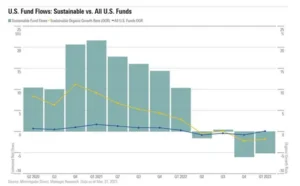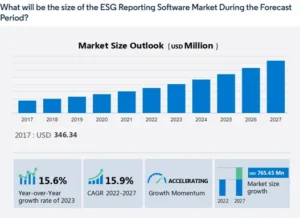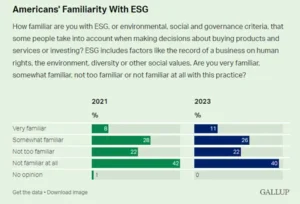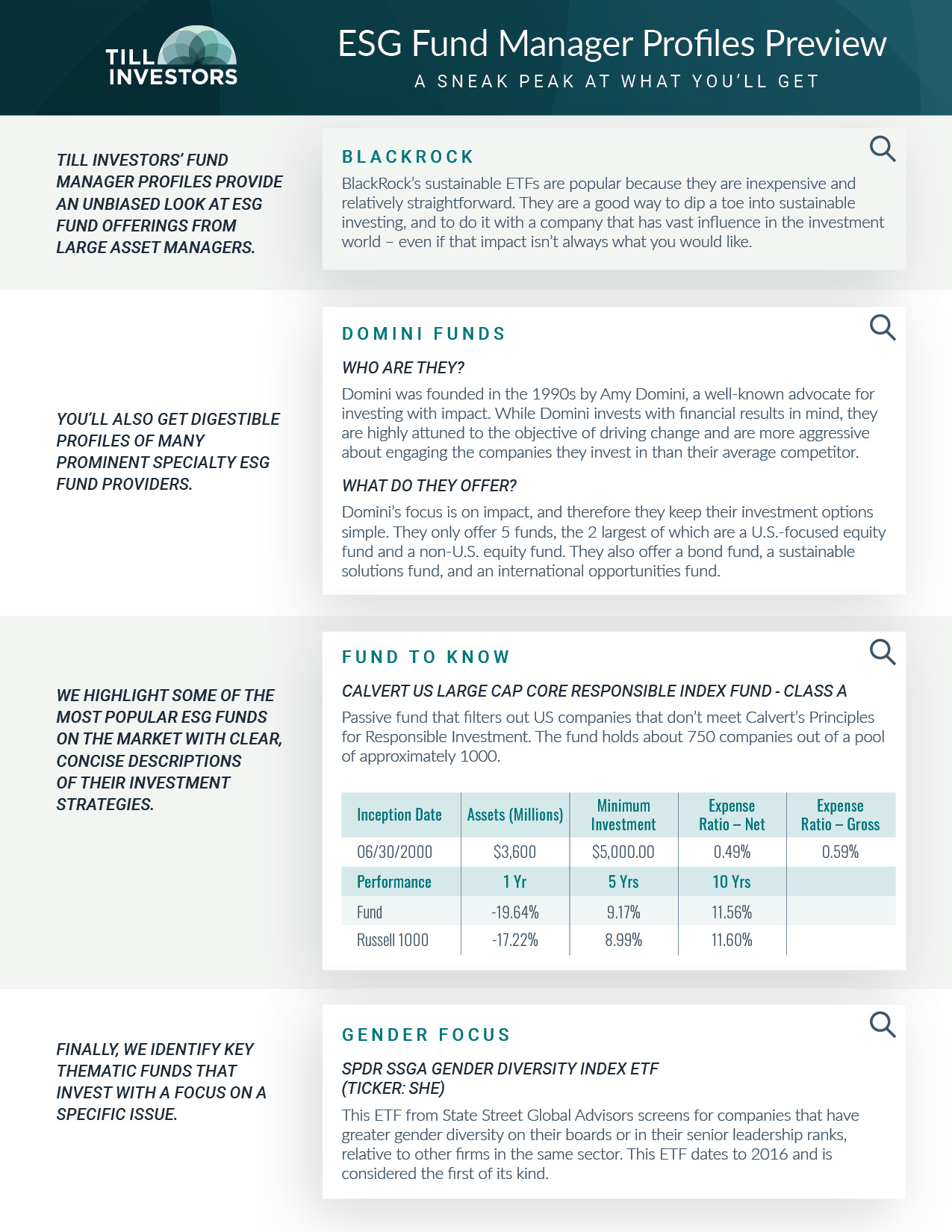Till Investors’ 2024 Outlook for Sustainable Investors

Inspection, Reflection, and a Key Inflection Point
 As 2023 comes to a close, we at Till Investors can confidently report that the corporate world has not transformed. If you’ve been investing for a better tomorrow, that day has not yet arrived. And yet: as observers of and advocates for sustainable investing, we are highly optimistic about the progress being made in the corporate world, and about your opportunity to grow your financial strength in concert with that progress in 2024.
As 2023 comes to a close, we at Till Investors can confidently report that the corporate world has not transformed. If you’ve been investing for a better tomorrow, that day has not yet arrived. And yet: as observers of and advocates for sustainable investing, we are highly optimistic about the progress being made in the corporate world, and about your opportunity to grow your financial strength in concert with that progress in 2024.
We consider this moment to be the good that isn’t the enemy of the perfect. And it’s a fine opportunity to inspect major developments in 2023, reflect on what they mean, and consider why they signal an inflection point for 2024. We put our thoughts together, and we asked some of our favorite sustainability colleagues to weigh in as well.
Inspection: The story of 2023 in 2 charts
If you charted the recent history of:
- The growth of sustainable investing
- The growth of corporate adoption of ESG principles and related reporting
Here’s what that would look like:


What data does this story tell? Here’s the short version. Investors’ appetite for sustainable investing funds waned in 2023, even as corporations continued to invest in producing more and better ESG data (that is, data that measures a company’s environmental, social, and governance impacts). Is this good news or bad news? We think a little more context is needed.
Reflection: Where Sustainability Stands at Year end 2023
There’s a slightly longer version of the story in those two charts, one that provides insight into where sustainable investing is likely to go in 2024. In this version:
A. The demand for sustainable investment options has been strong for more than a decade.
B. But, as with any strategy, short-term weakness — especially compared with fossil fuel-company gains in a period of rising oil prices — had investors pausing. Oil retreated from its highs towards the end of 2023, however, suggesting that short-term trend may be coming to an end.
C. Keeping an eye on long-term trends, major corporations with public stock have been accepting — even embracing — the responsibility to measure and report ESG data, especially on the environmental front.
D. Corporations have been encouraged by large-scale institutional investors, who are looking to either align their investments with their mission or to gain an information edge as they invest.
Another way to look at this data is to say that, to this point, the ability to generate ESG information has run a bit ahead of the ability to construct legitimate, understandable investment strategies around that data — ones that can sustain investor interest through a short-term market headwind. That appears to be changing. But investors are having a hard time keeping up.
Inflection: Change is coming in 2024
We see 4 key trends that will define the experience of sustainable investors in 2024. They are:
- Enhanced regulation
- Improving data
- Expanding corporate commitment
- Continued confusion for investors
Let’s start with the last item on the list. Regulators, data providers, and large corporations are all working hard to improve the landscape for ESG. But while the professionals are changing the wheels on the train as it rolls down the track, there are a lot of investors at the station who don’t even know the train exists. And that problem is not getting the attention it deserves.

Specifically, we see individuals, advisors, and even many foundations and family offices struggling to understand what ESG data is, what role it should play, and how to incorporate it in an appropriate portfolio strategy. While asset managers and advice providers are happy to sell ESG products, they aren’t as uniformly committed to bringing clarity to their clients.
Of course, clarity is hard to offer when there are so many different perspectives, even among ESG professionals. The ESG marketplace sometimes — and not inaccurately — has been described as “the wild west.” The name fits because, while ESG data and investment approaches have been a hotbed of innovation and competing ideas, there hasn’t been a lot of consistency or agreed upon standards. Even industry titans disagree on basic issues such as what ESG data is measuring.
There is a lot of evidence that this may be changing.
- We’re seeing consolidation in reporting structures. Last year SASB was taken over by the IFRS, and in December the TCFD handed over its work to IFRS as well. We expect companies will find it easier to comply with data standards, and that investors will get better, more comparable data.
- Virtually the entire S&P 500 provides ESG reporting now, and most (328) are having that reporting verified by an outside party. Better, more consistent data will make ESG investment strategies easier to manage and explain.
- The corporate commitment to sustainability is starting to move beyond data. According to the Harvard Business Review, chief sustainability officers (CSOs) are increasingly providing input into corporate strategy and engaging with investors on sustainability issues.
- ESG regulation is gaining momentum, despite recent political backlash in the US. The SEC has proposed several rules to standardize ESG disclosures and cut back on greenwashing. Many of these proposals have languished in political purgatory, but California passed its own ESG disclosure rules in October and other states may follow suit.
- These US regulatory efforts are happening against the backdrop of major progress in the European Union. The EU’s Corporate Sustainability Reporting Directive (CSRD) is set to be finalized in 2024, and the impact is expected to be felt by companies around the world. Sustainable Brands estimates that as many as 3,000 US companies will need to issue CSRD compliant reporting in coming years.
Of the 4 key trends, the most important for the long-term health of the industry are developments in regulation. By establishing baseline expectations, setting standards, and creating an enforcement mechanism around greenwashing, more defined regulations are expected to solidify the wild west ESG sphere into a more consistent, better defined, and more legitimate marketplace.
Investors Need More
These trends should all be good news for sustainable investors, regardless of whether they are values-driven or information-driven. But in our view, all this progress won’t mean very much if investors aren’t able to make sense of ESG investments.
Check out this FINRA/NORC study, which shows that well more than half of individual investors are drawn to the concept of making positive change in the world with their investments. Yet only 28% of investors have any familiarity with ESG. It’s a huge missed opportunity — for the industry and for those investors.
That’s a problem Till Investors and our many colleagues in the sustainability world plan to address in 2024. We wrote the book on starting your ESG journey in 2023, and you can find out more about our ESG communications and consulting efforts at our website. As for our colleagues, here are some of their ideas about what trends will matter in 2024.


